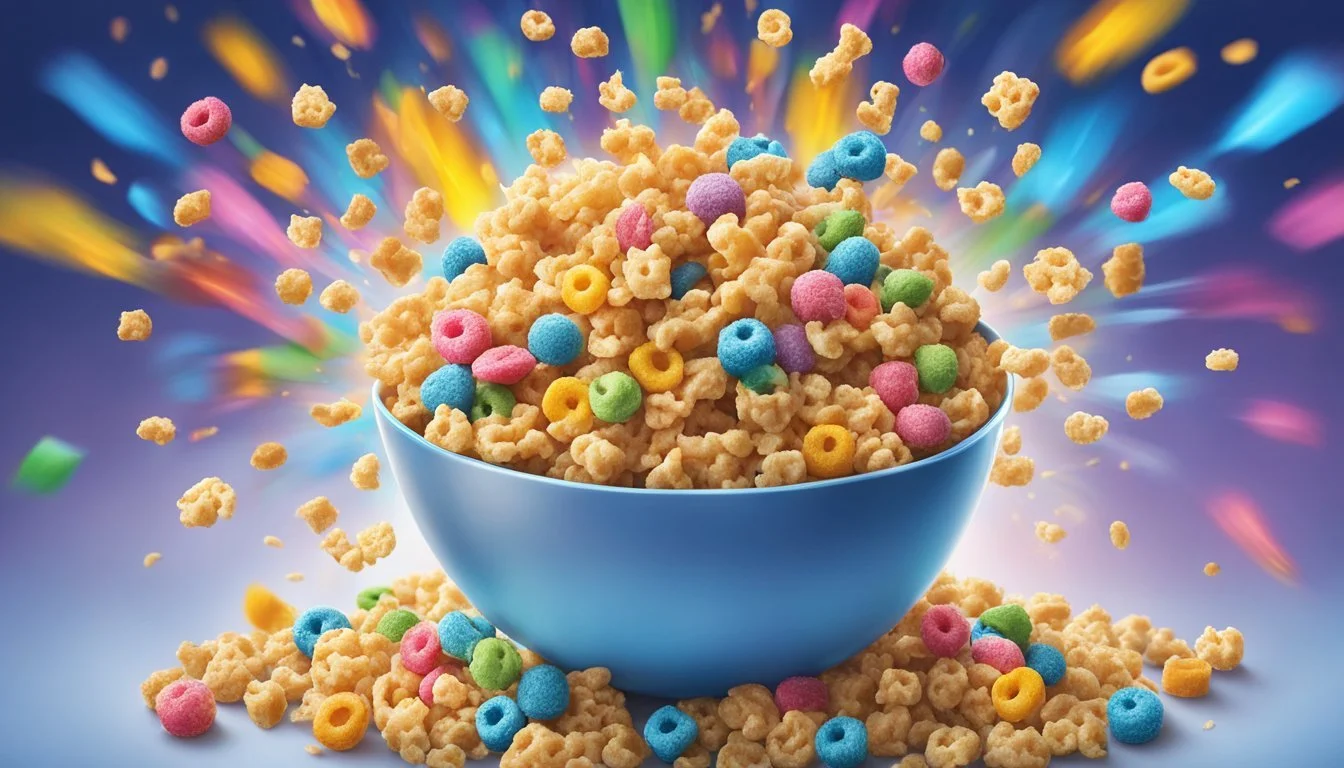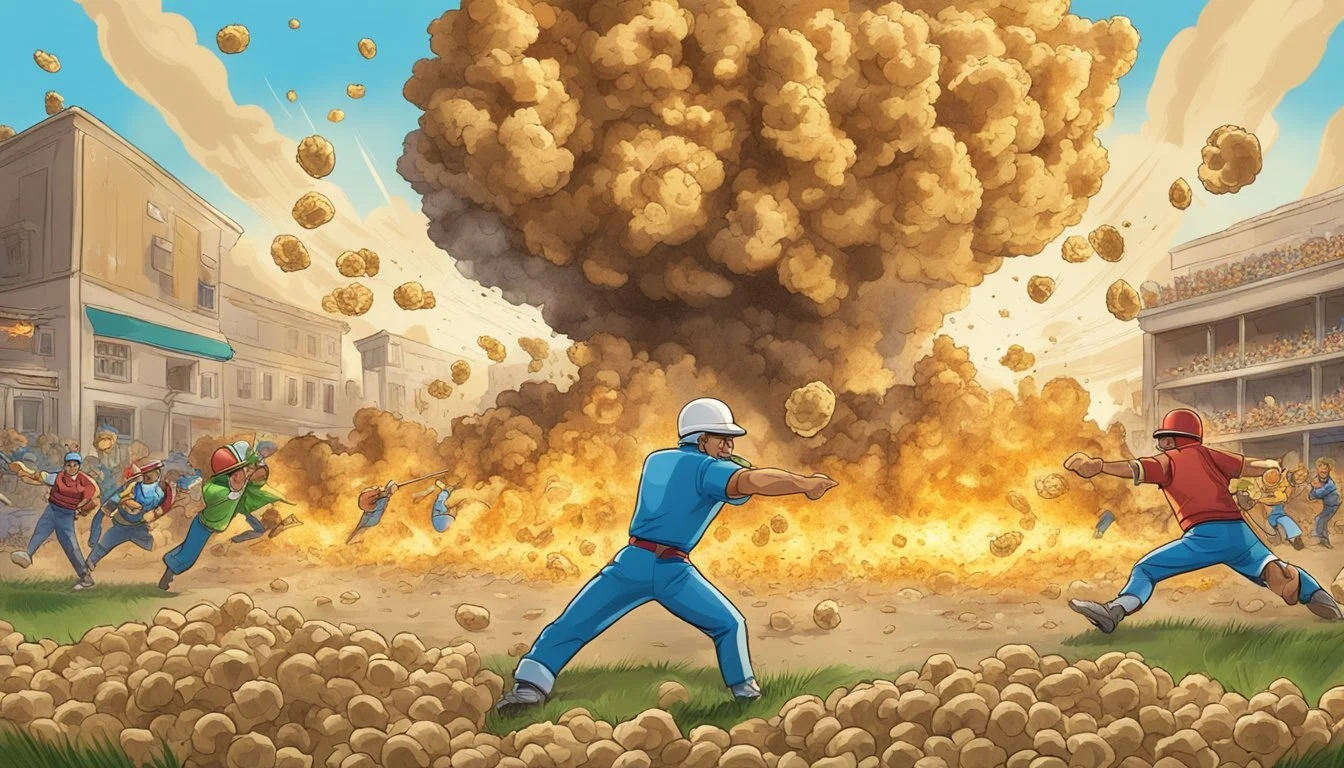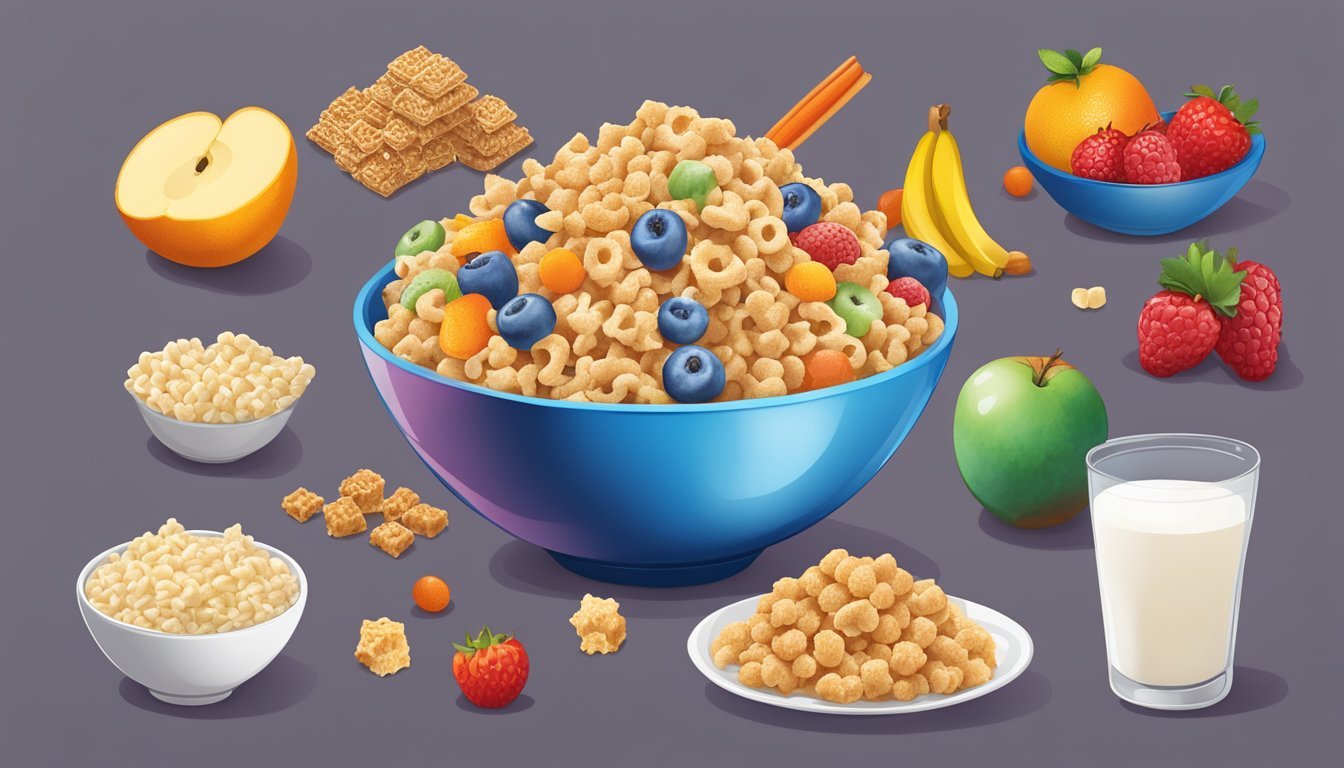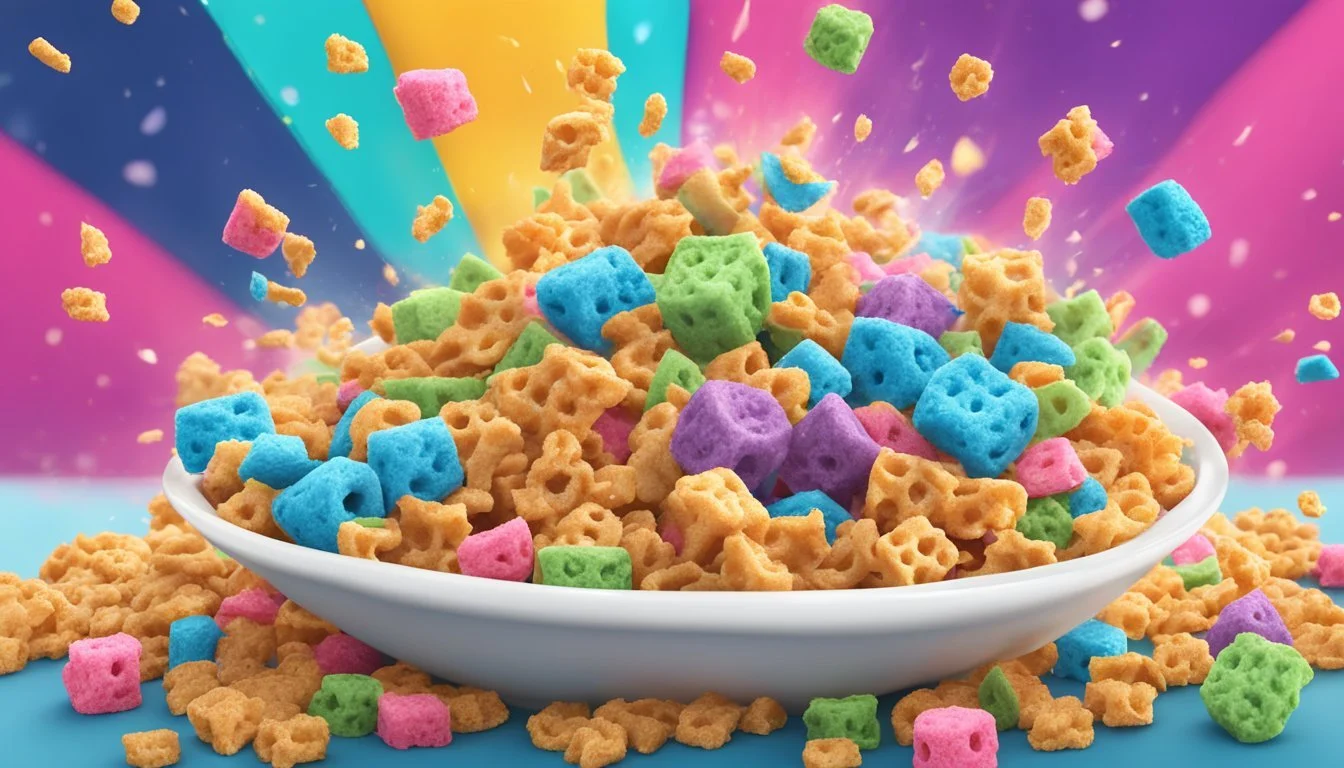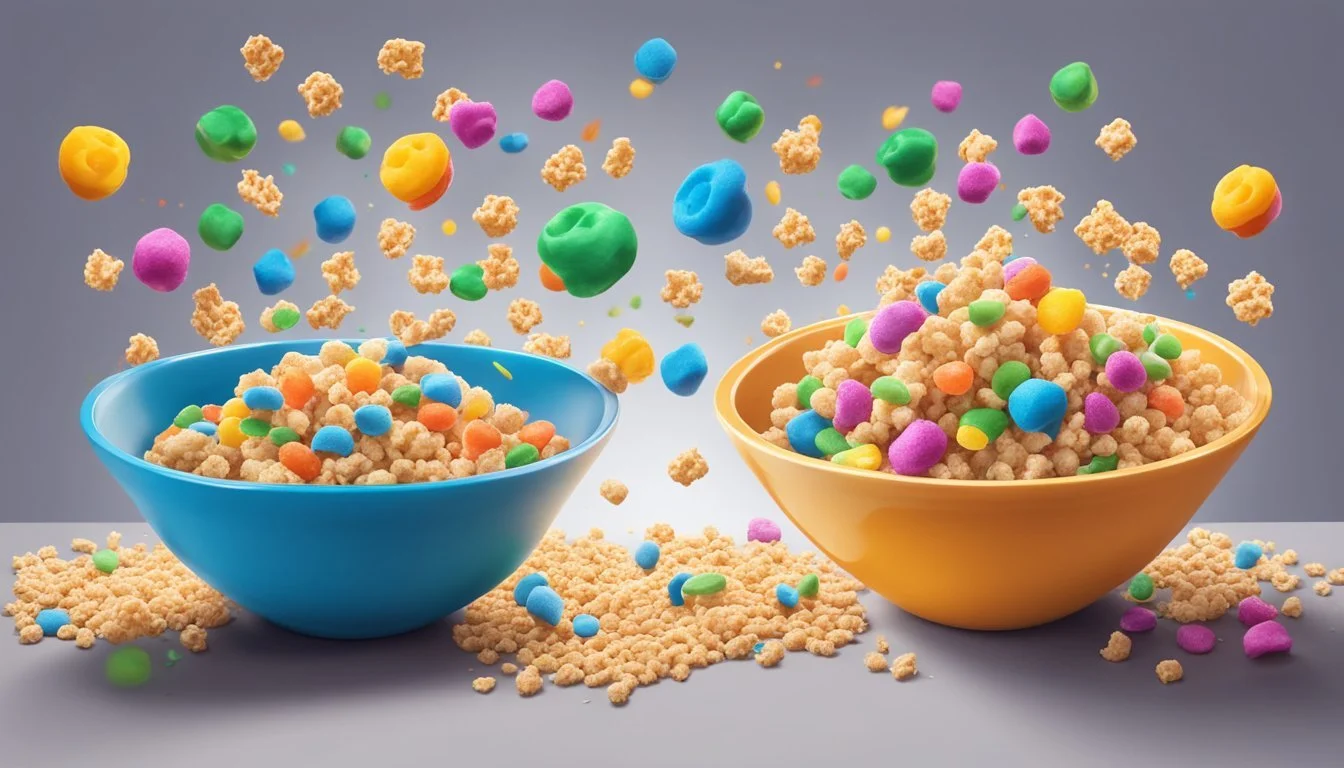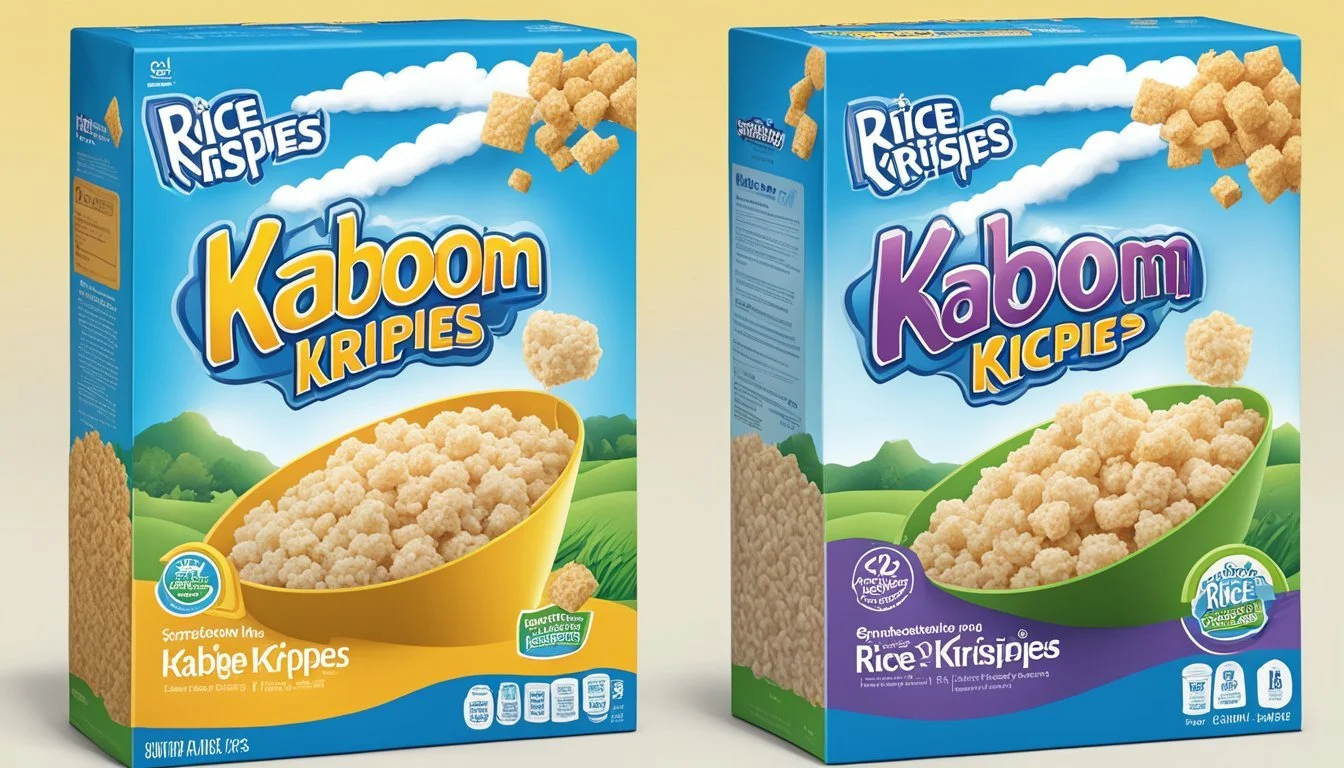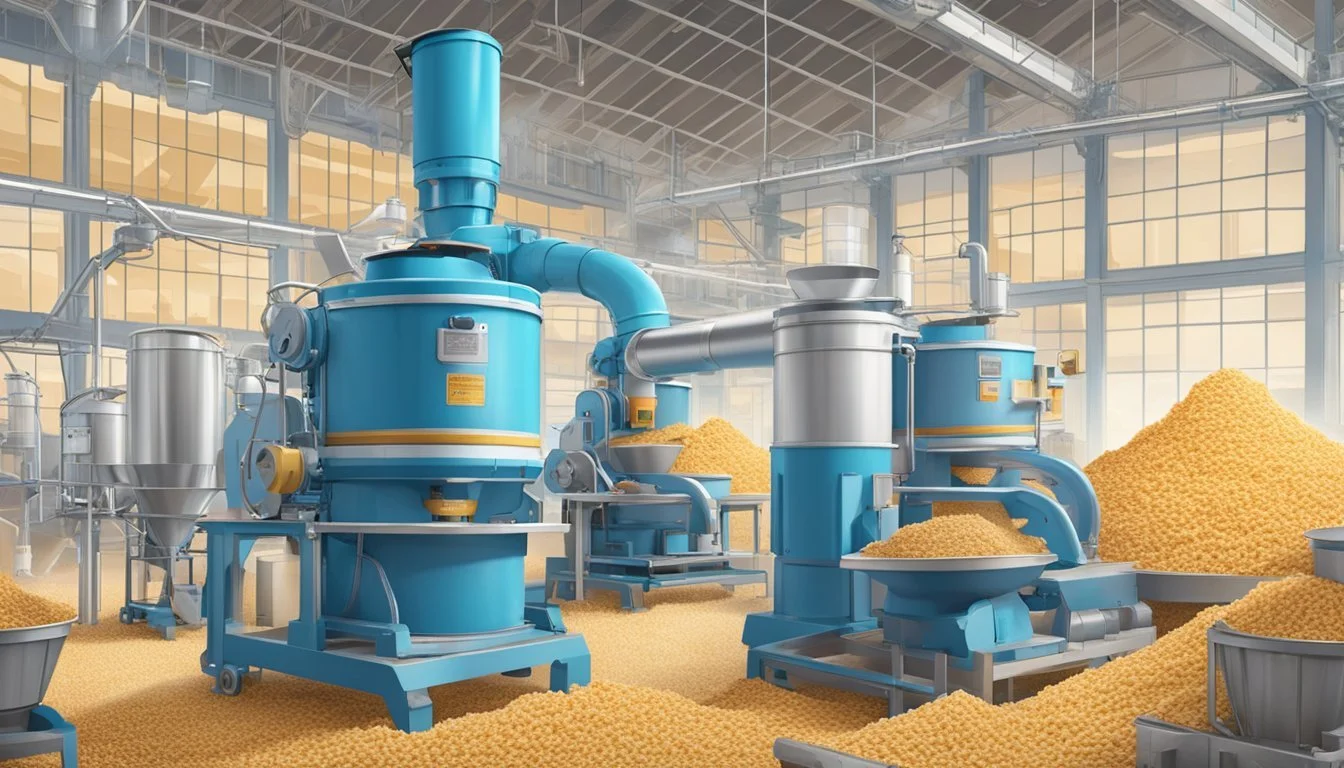Kaboom vs Rice Krispies
Comparing Nutritional Profiles and Taste
This Article is Part of Our Breakfast Cereal Guide with Details on Kaboom Nutrition and Rice Krispies Nutrition
Comparing Kaboom and Rice Krispies offers a fascinating look into the world of breakfast cereals. Kaboom, with its colorful, sugar-coated shapes, brings a blast of sweetness and nostalgia to the morning routine. Aimed primarily at children, its vibrant packaging and taste have made it a memorable option for many.
Rice Krispies, on the other hand, are known for their simplicity and versatility. Made from puffed rice, they have a neutral flavor that pairs well with various toppings or can be used as a base in homemade treats like Rice Krispie squares. Their classic "snap, crackle, and pop" sound has made them a staple in many households.
Both cereals have their unique appeals and can serve different purposes depending on one's preference. While Kaboom provides a sugary start to the day, Rice Krispies offer a more subdued and adaptable option.
Overview of Cereal Types
Cereal varieties range widely, appealing to diverse tastes and nutritional needs. Crispy rice cereals such as Rice Krispies remain popular for their texture and versatility.
Breakfast Cereal Variety
Breakfast cereal options feature a multitude of ingredients, flavors, and textures. Common varieties include classic options like Cheerios, Corn Flakes, and Lucky Charms. Other popular choices are sugary favorites like Cinnamon Toast Crunch and Frosted Mini Wheats.
Stores such as Walmart and Target carry generic versions of these cereals, often at lower prices. Differentiating factors include levels of sweetness, fiber content, and added vitamins or minerals. Consumers often select cereals based on personal taste preferences and nutritional goals.
Defining Crispy Rice Cereal
Crispy rice cereals are defined by their unique texture, achieved through a specialized cooking and drying process. Rice Krispies by Kellogg’s is one of the most famous examples. The production method involves cooking rice grains, pressing them under high pressure, and rapidly drying them.
The result is a light, crunchy cereal that produces the iconic "snap, crackle, pop" sound. Comparative options include generic brands found at major grocery stores like Target's Market Pantry Toasted Rice. Versatility makes these cereals suitable for both breakfast and snacking, serving as a base for no-bake desserts and other recipes.
Historical Background
This section delves into the origins and development of two well-known cereals: Rice Krispies and Kaboom. It covers their creation, key figures involved, and the process methods that were employed.
Origin of Rice Krispies
Rice Krispies were created by Kellogg's in the late 1920s. The R&D team began experimenting with puffed rice cereal in 1927. By 1928, W.K. Kellogg endorsed the novel product, leading to its public release.
Rice Krispies' distinct texture comes from combining rice with sugar paste, then cooking to create hollow, toasted "berries." This design produces the signature snap, crackle, and pop sounds. Marketed as "The Talking Cereal," it quickly became a beloved breakfast option.
Development of Kaboom
Kaboom was introduced by General Mills in 1969 as a colorful, frosted cereal with clown-shaped marshmallows. Unlike Rice Krispies, Kaboom aimed to attract children through vibrant aesthetics and a sweeter flavor profile.
Significant in the cereal’s history was its broad promotional campaigns during the 1970s and 1980s. Television commercials featuring the Kaboom clown played a crucial role in establishing its brand identity.
Kaboom differentiated itself with fortified nutrition, adding vitamins and minerals to appeal to health-conscious parents. Despite waning popularity, Kaboom maintains a niche market among nostalgic consumers.
Comparative Analysis
Kaboom and Rice Krispies offer distinct experiences in texture, taste, ingredients, and nutritional value. This analysis highlights their unique characteristics and the key differences consumers may find important.
Texture and Taste Profile
Kaboom cereal is known for its colorful, fun-shaped pieces that stay relatively crunchy in milk. It delivers a slightly fruity taste with a hint of marshmallow sweetness. The texture can become slightly soggy but retains some crunch.
Rice Krispies have a light and airy texture, offering a neutral, mild rice flavor. The cereal quickly absorbs milk, creating a soft, almost mushy consistency. For added texture, many enjoy it with yogurt, nuts, or fruits.
Key Ingredients and Nutritional Value
Kaboom's ingredients include enriched flour, sugar, oat flour, and a variety of vitamins like Vitamin B6 and Vitamin D. The cereal is fortified with essential minerals such as iron and zinc. However, it tends to be high in sugar, making it less ideal for those watching sugar intake.
Rice Krispies primarily consist of rice and sugar. They are fortified with vitamins and minerals, including iron and vitamin B6. The cereal is low in fat and relatively low in sugar compared to many other options, though it lacks the added fiber and whole grains valuable for a balanced diet.
Culinary Uses and Recipes
Kaboom and Rice Krispies both serve as the foundation for a variety of delightful and creative recipes. Each cereal offers unique textures and flavors that can be applied to different culinary creations, providing both classic and innovative options.
Classic Rice Krispies Treats
Rice Krispies Treats are a familiar and beloved snack that combines the light and crunchy texture of Rice Krispies cereal with the gooey sweetness of marshmallows and butter. These treats are relatively simple to make, requiring only a few ingredients and minimal effort.
To prepare, melt butter over medium heat. Once melted, add most of the marshmallows, reserving a small portion for later, and stir until completely melted. Remove from heat, stir in the cereal until evenly coated, then add the remaining marshmallows for extra gooeyness. Press the mixture into a greased pan and allow it to cool before cutting into squares.
For variations, consider adding chocolate chips, peanut butter, or even a sprinkle of sea salt for contrast. Experimenting with different mix-ins can elevate this traditional no-bake dessert into something uniquely delicious.
Innovative Kaboom Desserts
Kaboom cereal, known for its fruity flavor and colorful appearance, opens up a world of creative dessert possibilities. Its bright colors and crunchy texture make it ideal for both visual appeal and taste.
Kaboom can be used to create no-bake cereal bars similar to Rice Krispies Treats. Combine melted butter and marshmallows, then mix in the Kaboom cereal. Add fun twists such as white chocolate chips or a drizzle of melted chocolate on top.
For a more sophisticated dessert, consider using Kaboom as a vibrant topping for cupcakes or cheesecakes. The crunchy texture and fruity taste complement various desserts, adding both flavor and visual interest. Layer it in parfaits with whipped cream and fresh fruit for a colorful and tasty treat.
Dietary Considerations
When comparing Kaboom and Rice Krispies, it's critical to consider dietary restrictions and how each cereal can contribute to a balanced diet. Both cereals offer unique benefits and potential limitations that can impact one's nutrition choices.
Gluten-Free Preferences
Kaboom cereal is not gluten-free as it contains wheat, making it unsuitable for individuals with celiac disease or gluten sensitivity.
Rice Krispies, made primarily of rice, are generally gluten-free, meeting the needs of those avoiding gluten. However, it's important to check for any potential cross-contamination or specific product variations to ensure compliance with strict gluten-free requirements.
Adding Nutritional Value
Protein and Fiber: Neither Kaboom nor Rice Krispies are particularly high in protein or fiber. For those seeking a nutrient-dense breakfast, adding nuts or seeds can boost protein content.
Vitamins and Minerals: Kaboom includes added vitamins and minerals, contributing to daily nutritional intake. It offers a blend of essential nutrients which can be important for those who might not get enough from other sources.
Sugar Content: Rice Krispies have a lower sugar content compared to Kaboom. Moderating sugar intake is important for overall health, and opting for additional fruits instead of sugary cereals can provide natural sweetness plus extra vitamins and minerals.
Consider incorporating fresh fruits or Greek yogurt to enhance the overall nutritional value of these cereals.
Consumer Perspectives
Both Kaboom and Rice Krispies have garnered distinct consumer perspectives shaped by their unique flavors and textures.
Reviews and Popular Opinion
Kaboom, known for its colorful and fruity flavor profile, attracts children and nostalgic adults. Consumers appreciate its mixture of sweet and crunchy textures. However, some reviews point out Kaboom’s high sugar content and artificial flavors as potential drawbacks.
Rice Krispies, with its simple, classic taste, tends to be favored by those seeking a less sweet cereal. Its light texture and signature crunch are highlighted in many positive reviews. Additionally, the cereal's versatility, especially in making Rice Krispies Treats, adds to its popularity. Some criticism is directed at its bland flavor when compared to more modern, flavorful cereals.
Market Trends and Preferences
Market trends indicate a clear divide: younger consumers and those with a sweet tooth prefer Kaboom, while a broader demographic, including health-conscious adults, leans towards Rice Krispies. The latter's low-calorie count, coupled with its use in popular snacks, influences its demand positively.
Kaboom's visual appeal and taste keep it relevant among children. Meanwhile, Rice Krispies' simplicity and nostalgia value maintain its strong market position. The trend of seeking natural and less sugary cereals might impact Kaboom more than Rice Krispies, which is often perceived as a lighter, more versatile option.
Innovations and Variations
Both Kaboom and Rice Krispies have introduced numerous special edition flavors and collaborated in seasonal releases, creating unique and exciting options beyond their original versions.
Special Edition Flavors
Kellogg’s Rice Krispies have launched various special edition flavors to appeal to different taste preferences. Among these, chocolate and strawberry are popular choices that add a twist to the traditional cereal.
Similarly, Kaboom has offered unique flavors too. Limited editions like peanut butter have been tried, providing a different taste experience. These innovations help in maintaining consumer interest and catering to diverse palates, ensuring there’s something for everyone.
Moreover, Rice Krispies are often used in Rice Krispie Treats, where they can be combined with various ingredients such as marshmallows, hint of coating, and a pinch of salt to enhance flavor profiles.
Seasonal and Collaborative Releases
Rice Krispies has also ventured into seasonal and collaborative releases. During festive seasons, special packaging and flavors are introduced, like holiday-themed marshmallows shapes. Collaborative releases with popular brands have led to exciting new products on the shelves.
Kaboom, although less frequent in seasonal releases, has participated in a few collaborative efforts. These releases, timed with holidays or promotional events, often include special designs or temporary flavors that generate buzz and excitement among consumers, bringing a fresh take on the familiar cereals.
Both brands emphasize freshness and novelty in their seasonal and collaborative variants, delighting their audiences with innovative approaches to classic favorites.
Packaging and Sustainability
Both Kaboom and Rice Krispies have made significant strides in sustainable packaging. Their approaches highlight their commitment to environmental responsibility and ensuring product freshness.
Eco-Friendly Practices
Kaboom employs recyclable materials in their packaging, reducing waste and the brand's carbon footprint. By incorporating biodegradable elements, they aim to lessen the environmental impact.
Rice Krispies, produced by Kellogg’s, prioritizes sustainability by using responsibly sourced materials. Their packaging includes innovative touch-and-feel sensory stickers to assist children with autism, showing a commitment not just to environmental but also social sustainability. Furthermore, Kellogg's efforts to reduce methane emissions from rice production underscore their environmental commitment.
Shelf Life and Storage
In terms of shelf life and storage, both brands have distinct approaches. Kaboom uses advanced packaging technology to extend product freshness. Their packaging materials guard against moisture and air, which helps maintain the cereal’s crispness.
Rice Krispies benefits from high-quality sealing techniques that keep the rice grains fresh for extended periods. The use of proper drying and storage methods ensures the product remains crunchy. While the packaging is sustainable, it also prioritizes preserving the product’s crisp texture.
By focusing on these specific elements, both brands ensure their products are fresh and environmentally conscious. The balance between eco-friendly practices and maintaining product integrity is key.
Manufacturing Process
The creation of Kaboom and Rice Krispies involves unique manufacturing techniques and ingredient selection to ensure their distinctive textures and flavors. The processes emphasize ingredient sourcing, quality control, and the transformation of simple grains into beloved cereals.
Crafting Cereal and Treats
For both Kaboom and Rice Krispies, the manufacturing starts with key grains that undergo specialized processes to achieve their iconic textures. Rice Krispies, composed primarily of puffed rice, derive their texture from a multi-step process. The rice is first cooked, then dried, and finally toasted, causing the starch granules to expand and the kernels to puff, creating that signature crisp.
Kaboom, on the other hand, utilizes a blend of corn, wheat, and rice flour. These grains are mixed, cooked, and then extruded into fun-shaped, colorful pieces. The pieces are subsequently toasted to attain the perfect crunch. Kaboom often also includes the addition of marshmallows, enhancing the appeal and diversity of textures in the final product. Butter and other flavoring agents may be mixed in during production to achieve the desired flavor profile for treats.
Ingredients Sourcing and Quality Control
The quality of the final cereal and treats relies heavily on sourcing high-quality ingredients and maintaining strict quality control measures throughout the production process. Rice Krispies use medium-grain rice primarily sourced from regions like Louisiana and Arkansas. This rice is chosen for its consistency and ability to puff effectively during the cooking and toasting process.
Kaboom sources its corn, wheat, and rice from reputable suppliers who provide grains suited for extrusion and toasting. Regular testing and inspections ensure that each batch meets the required standards. Starch content, moisture levels, and the purity of the ingredient list are critical factors assessed regularly. Emphasizing quality control, both cereals undergo rigorous checks to maintain their integrity, texture, and flavor, ensuring that they meet consumer expectations.

